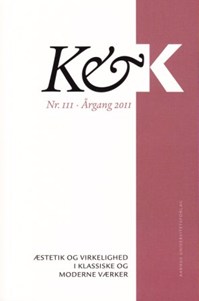Tilsynekomstens politik. Om virkelighedsmodellering i Joseph Conrads Nostromo
DOI:
https://doi.org/10.7146/kok.v39i111.15767Nøgleord:
Joseph Conrad, Nostromo, literature, politics, reification, narrative technique, imperialism, Jacques Rancière, Jurij Lotman.Resumé
POLITICS OF APPEARANCE. ON REALITY MODELLING IN JOSEPH CONRAD’S NOSTROMO
Artistically Nostromo is arguably the most ambitious of Joseph Conrad’s novels. It is also without a doubt the most explicitly political in that it openly engages with the question of how capitalism, imperialism, and revolution affect the human consciousness. There is however no agreement as to how this political problem is to be understood or, more precisely, what kind of understanding of the interrelationship between politics and literature is necessary when engaging this artwork. As a necessary supplement to both a 60’s Marxist reading and readings from the 70’s and 80’s dealing with ideological criticism, this article suggests a reading focusing on how the text creates a model of society by reconfiguring certain real life elements. By developing a specific artistic idiom Nostromo attempts to show the very limited view of the whole of society caused by, in the wording of the novel, the material interests of imperial capitalism. Under the inspiration of both Jurij Lotman and Jacques Rancière the analysis presented here is able to address some key political insights that appear as a consequence of the novelistic form when understood as a relatively autonomous model of society. And that is what is meant by the expression politics of appearance: the politics of literature is to be analysed as something generated by the specific gestalt of the text, as something that comes into sight with – and only with – the text.
Downloads
Publiceret
Citation/Eksport
Nummer
Sektion
Licens
Tidsskriftet følger dansk ophavsret.





